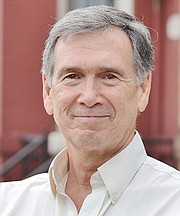Most of us have heard of the phrase “Age in Place.” It reflects many mature Americans’ wish to remain in their long-time homes as they grow older. The home is comfortable, plus near friends and family, their doctors and dentists, familiar shopping and services. Often, it means modifying the home itself to make it easier to manage — converting a room/adding a first-floor bedroom, adding extra handrails or ramps, installing extra lighting. Plus, hiring people to handle the yard work such as mowing, leaf raking or snow shoveling. For many, it works well. However, it often means one or two people rattling around in a large house that is expensive to maintain.
There is, however, an important companion to Age in Place that is often an even better match — Age in Community. As the phrase implies, many people are deciding — some very early on after the kids leave — to move to more suitable housing locally for their next phase of life. The key is “locally.” They stay near the friends and family, doctors and dentists, shopping and services. They just move to a more manageable home. Sometimes the move is from a single-family home to a townhouse, sometimes it is from a single to a condo or apartment, sometimes from a townhouse to a condo/apartment. Regardless of the scale of the move, the goal is to maintain all the familiarity that they have come to know over the years while making their housing more appropriate — to Age in Community.
The benefits are many. Obviously, maintenance is less, especially in a condo or apartment. Equally as important, people now have closer neighbors — which stimulates engagement. Sometimes it makes it much easier to travel — just lock up and head to the airport! If not to travel, then certainly to enjoy local activities more easily.
Another significant benefit of selling a long-time home can be financial. In our area, it can be relatively easy for folks to have accumulated a good bit of equity over the years. However, it is locked away in their homes — almost unusable. Freeing it up gives all sorts of options to move locally — and use the equity to enrich their quality of life. In addition, the current tax code gives qualifying owners an “exclusion” from capital gains tax of $250,000 per owner, $500,000 per couple when they sell a principal residence. If our area continues to be fortunate in its rising real estate values, each extra dollar of appreciation will likely have to be shared with the Tax Man! Alternatively, locking in the “gain” by selling, and re-investing in a different, more appropriate property, starts that exclusion clock all over again. (Consult your tax person for your personal situation.)
So how common is Age in Community becoming versus Age in Place? One of our local Senior Villages, At Home in Alexandria (AHA), which supports older Alexandrians with a variety of services and social activities, has an almost evenly split membership. Roughly half seem to be Aging in Place. The other half has moved — and are Aging in Community. Mount Vernon at Home (MVAH), our Senior Village below the Beltway, has a mix as well. These Villages support both approaches to living well.
Our area is fortunate to have almost every option available to folks who wish to change their housing. We have apartments, condos, townhouses and even smaller single-family homes — for many budgets.
Is Aging in Community for you? Happy to brainstorm!
Peter B. Crouch is an associate broker, senior real estate specialist at McEnearney Associates. He is a sponsor and volunteer for At Home in Alexandria and Mount Vernon at Home. Call 703-244- 4024 or email PCrouch@McEnearney.com.
